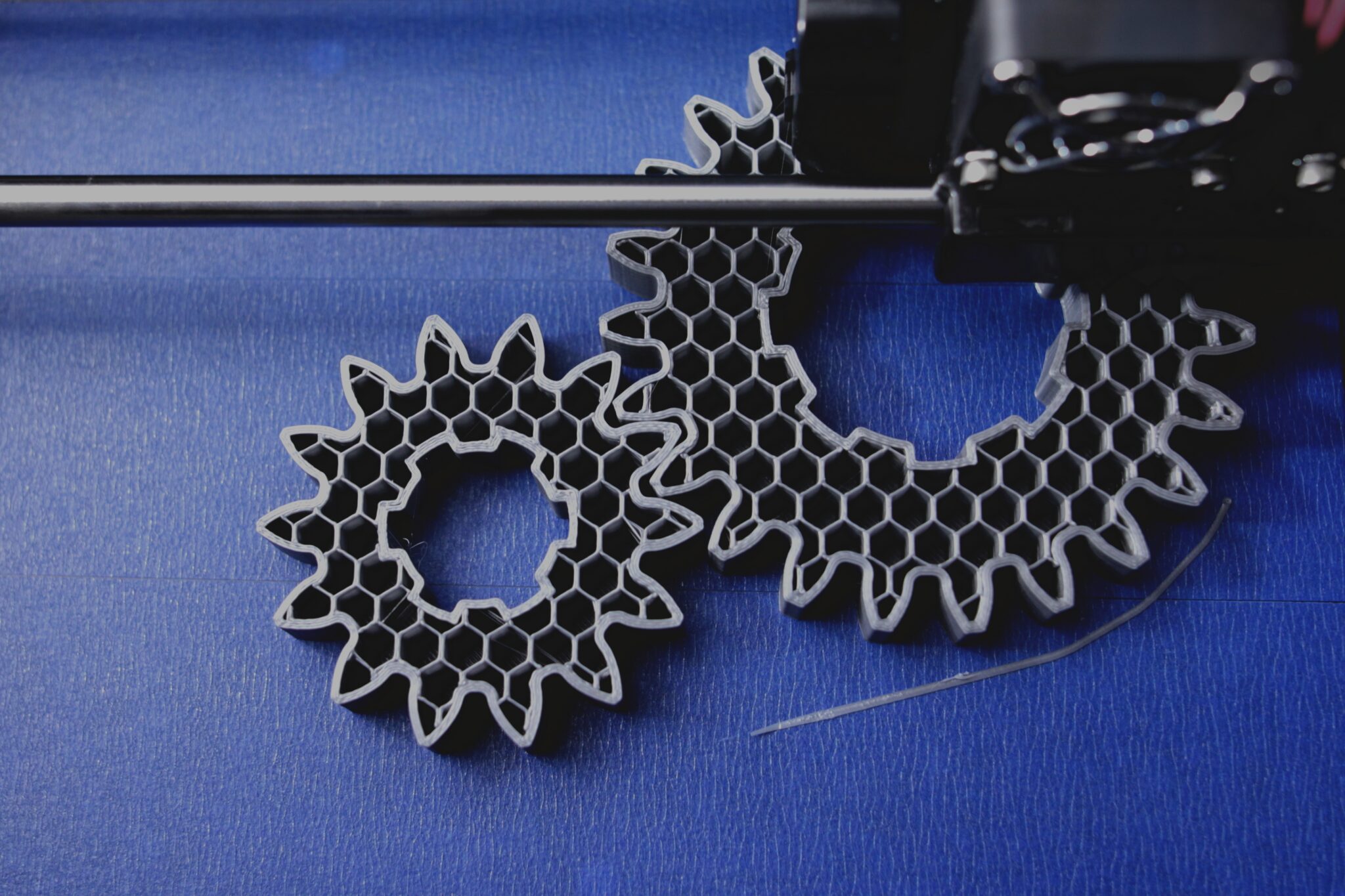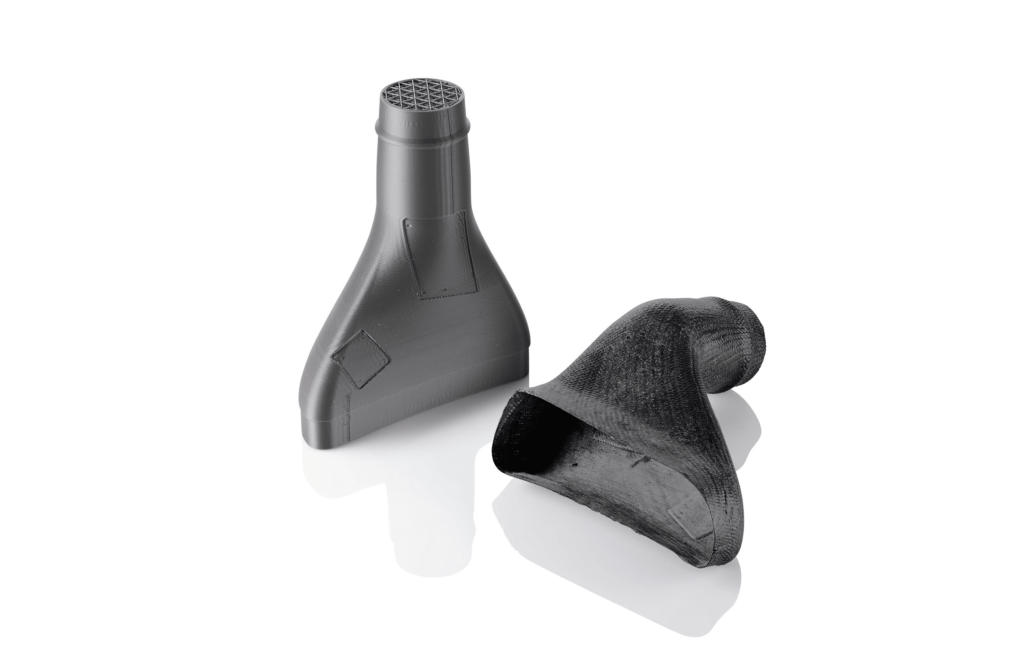

Originally published on fastradius.com on September 14, 2020
Though traditional manufacturing techniques can effectively produce basic shapes with uniform cross-sections, creating parts with hollow interiors or complex geometries presents unique challenges. However, with sacrificial tooling, designers and engineers don’t need to compromise on shape or material integrity.
Sacrificial tooling involves printing a structure in a soluble material, which is then used to create complex structures. This technique enables designers and engineers to easily create complex or hollow structures — featuring any kind of undercut — with smooth interiors out of numerous materials. Sacrificial tooling is usually performed via fused deposition modeling (FDM), which enables high accuracy and repeatability.
Sacrificial tooling begins with a two-part design: a design of the tool, and a design of the final part. Of course, these two designs are essentially flip sides of the same coin; the sacrificial tool is designed to fill the interior of the final part. The tool should be built first, with allowances to promote fluid flow once it comes time to dissolve the tool.


Once the tool has been constructed and the final part fitted around it, no further preparation is needed besides sanding to improve the surface’s finish and the application of resin to encourage even dissolution of the tool. With that complete, the part should be fully submerged into a removal detergent, which will dissolve the tool and leave the final part intact.
Sacrificial tooling is often favored by designers and engineers not only because it allows for the creation of complex structures with any number of materials, but also because it guarantees a shorter production time than many other manufacturing methods. In addition, it results in a product with no bonded seam. Other advantages of sacrificial tooling include:
Certain industries and applications are especially well-suited for sacrificial tooling, particularly those that require complex parts made of strong, heat-resistant materials, but that don’t require high production volume. Further, sacrificial tooling is ideal for creating products that fully enclose the part. FDM technology is most commonly used to create complex parts with hollow interiors, such as complex ductwork.
The aerospace and automotive industries see a range of common use cases for sacrificial tooling. Aircraft require incredibly strong, highly detailed parts, and sacrificial tooling helps achieve both of those goals. Similarly, the motorsports industry requires complex, specialized, strong, and lightweight parts.
When considering sacrificial tooling, designers and engineers should pay particular attention to two material characteristics: the coefficient of thermal expansion, and the cure temperature and pressure pairings.
Beyond the material’s characteristics, designers and engineers need to choose between two design styles: a sparse interior fill pattern or shell style. Sparse style is most commonly used, and in most cases, provides the optimal balance between build time and tool strength. Shell style, however, uses less build material and is especially effective when using an envelope bagging process.
It’s also important to choose the optimal orientation when manufacturing a part via sacrificial tooling. Tools can be built in a vertical or horizontal orientation, but the selected orientation will affect build speed, surface quality, support material requirements, and overall performance. The tool’s end-use application should be carefully considered during the design phase to determine the best build orientation.
For designers and engineers looking to build complex parts with hollow interiors, FDM sacrificial tooling offers a reliable, simple, and cost-effective method. Unlike traditional tooling methods, which require complex assembly or expensive, fragile wash-out tools, FDM sacrificial tooling is hands-off, versatile, and relatively simple.
At SyBridge, we’re committed to helping our customers build excellent products in the most efficient manner possible. Our design and development engineering teams consist of experts who work closely with our clients during every stage of the manufacturing process, from concept to delivery. Contact us today to get started.
Forget typical cycle times. We're pushing the boundaries of conformal cooling. While traditional approaches deliver…
Forget typical cycle times. We're pushing the boundaries of conformal cooling. While traditional approaches deliver…
From left to right: Brayden Janak (apprentice); Logan Vifaquain (CNC machining, Programming and CMM); Ron…
SyBridge Technologies is proud to announce we have been awarded the 2023 General Motors Supplier…
Today, designers and engineers are accustomed to working with digital tools in their day-to-day jobs.…
Optimizing Your Injection Molding Process for Cost-Effective Manufacturing Excellence In today’s competitive landscape, manufacturers are…